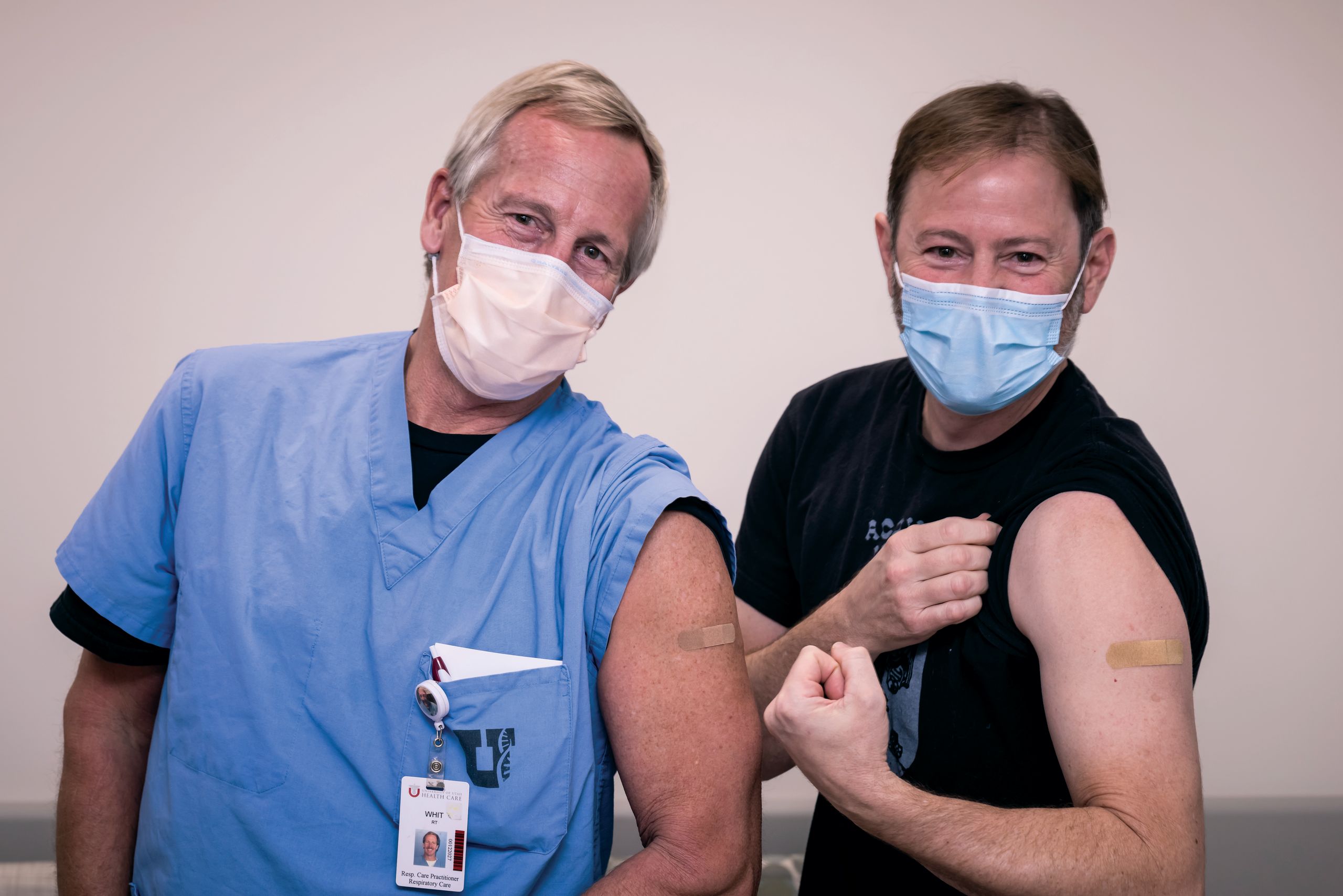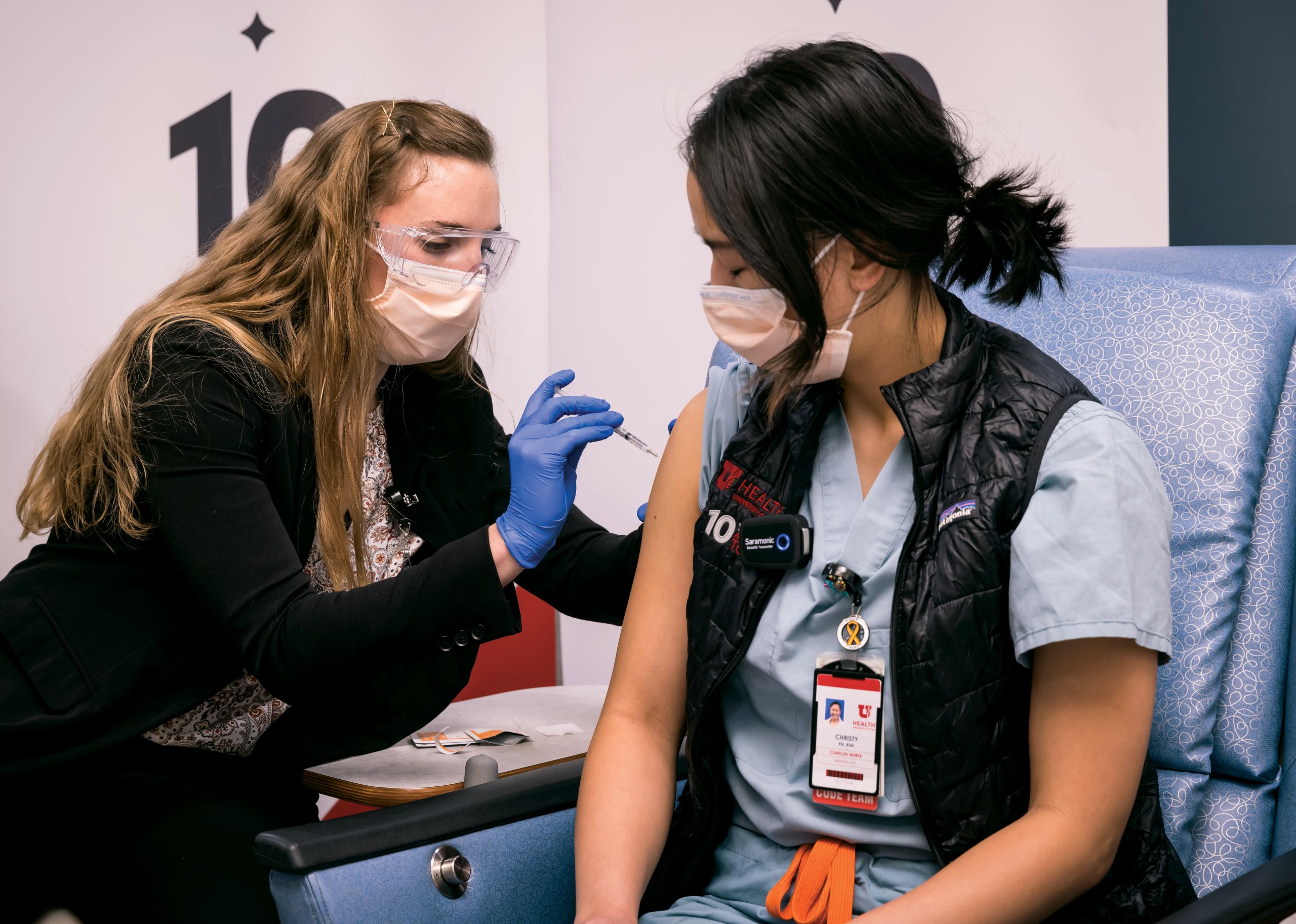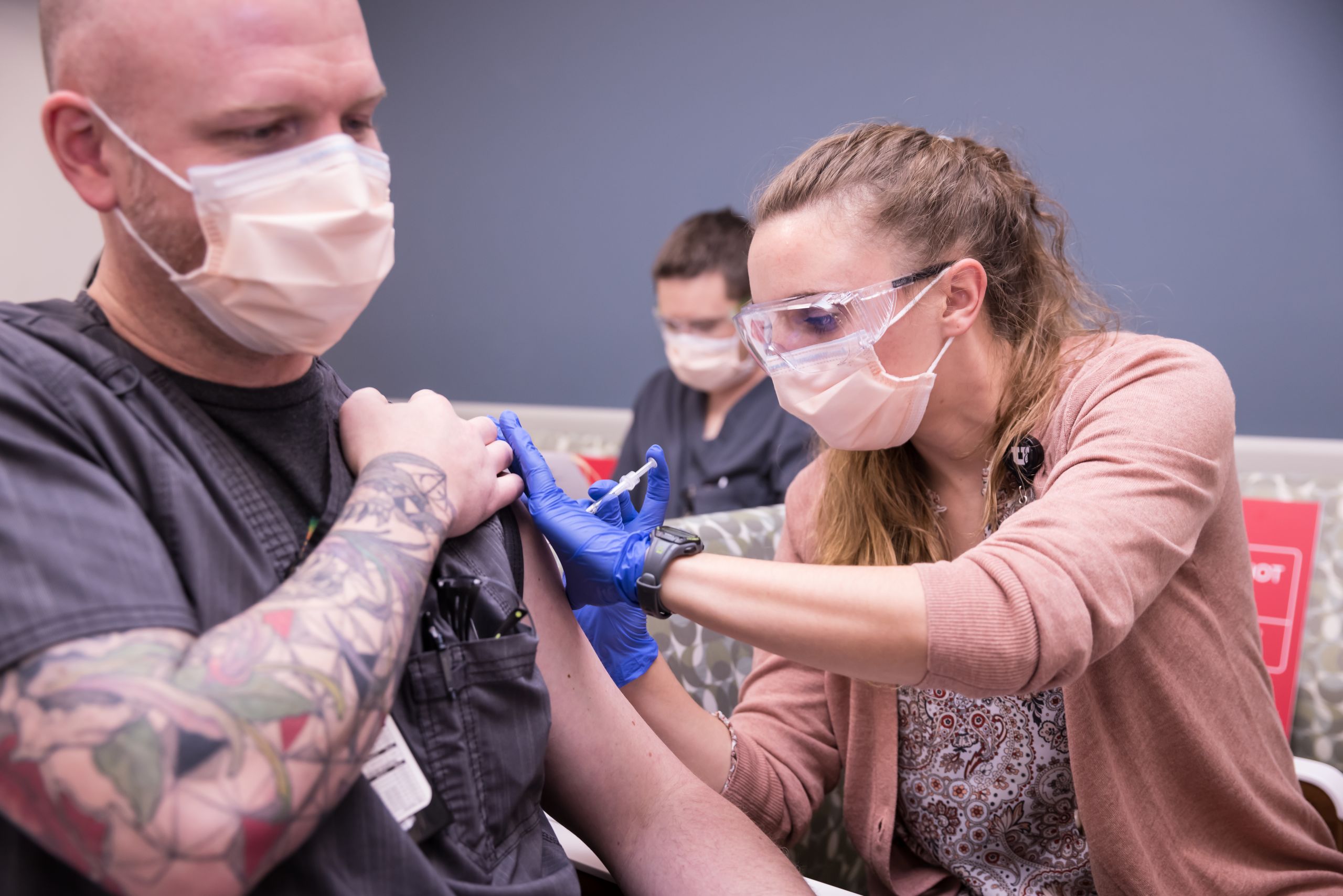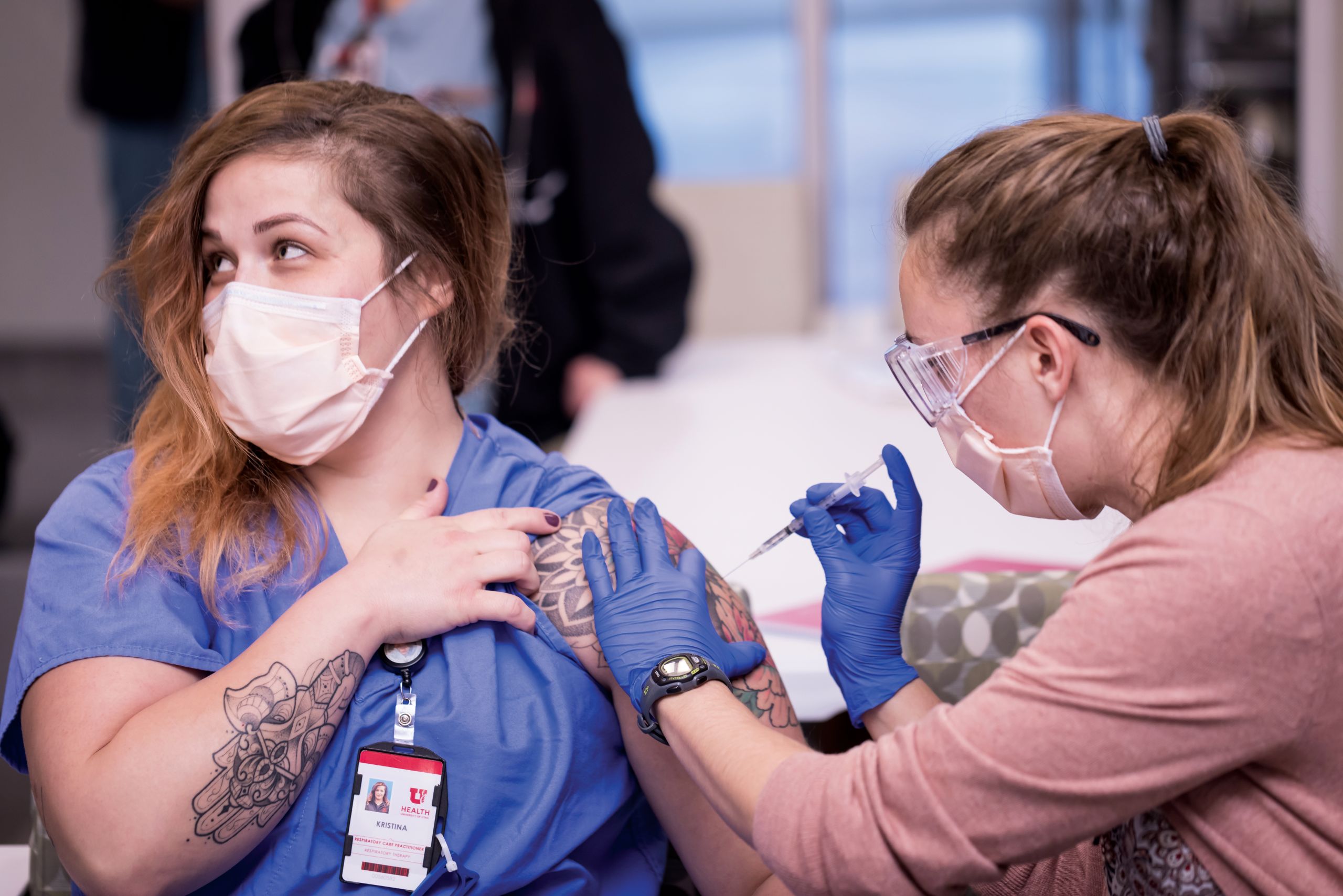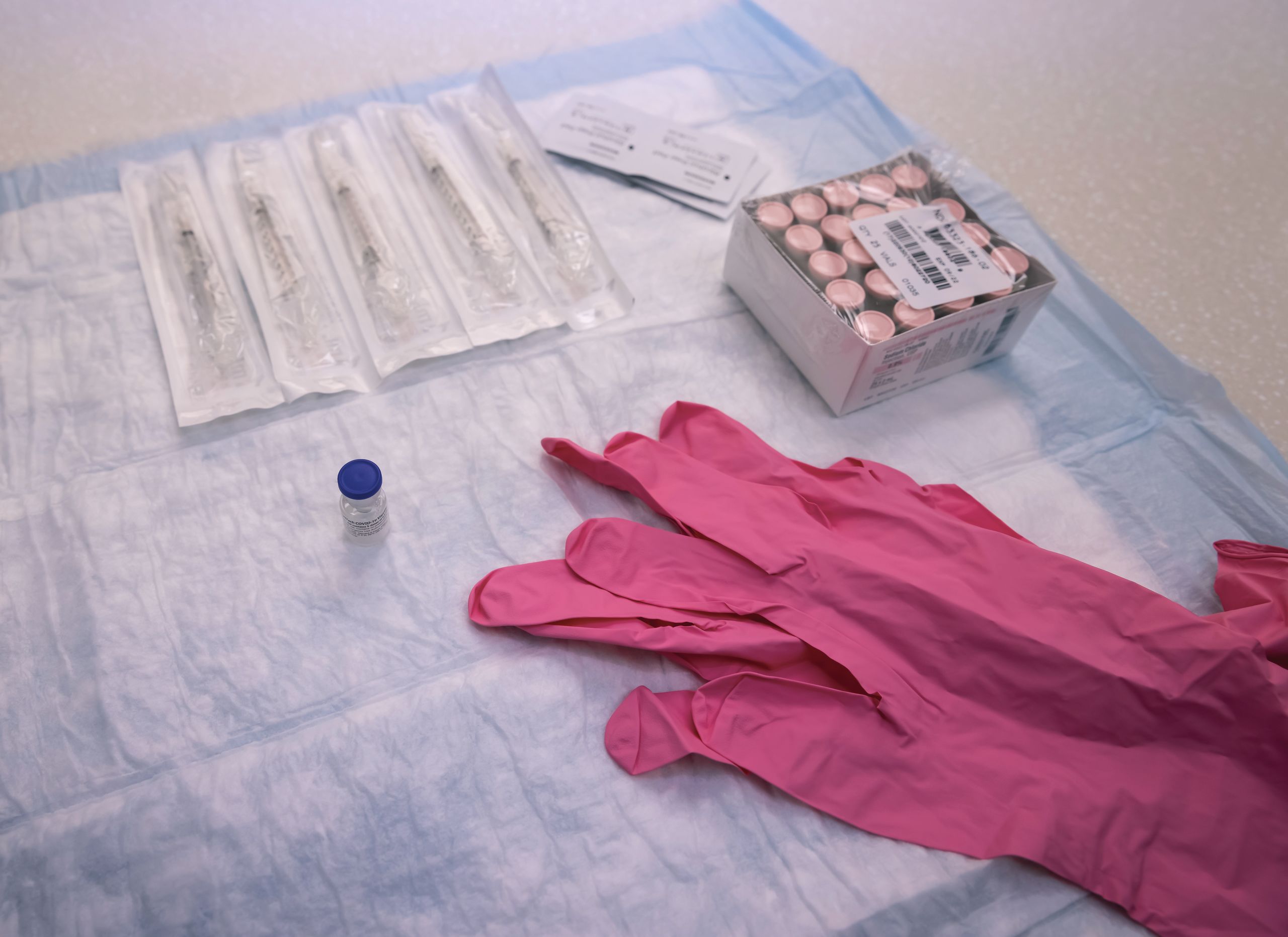Changing the Course of the Pandemic
Five University of Utah Health frontline health care workers receive the first COVID-19 vaccine in the state of Utah
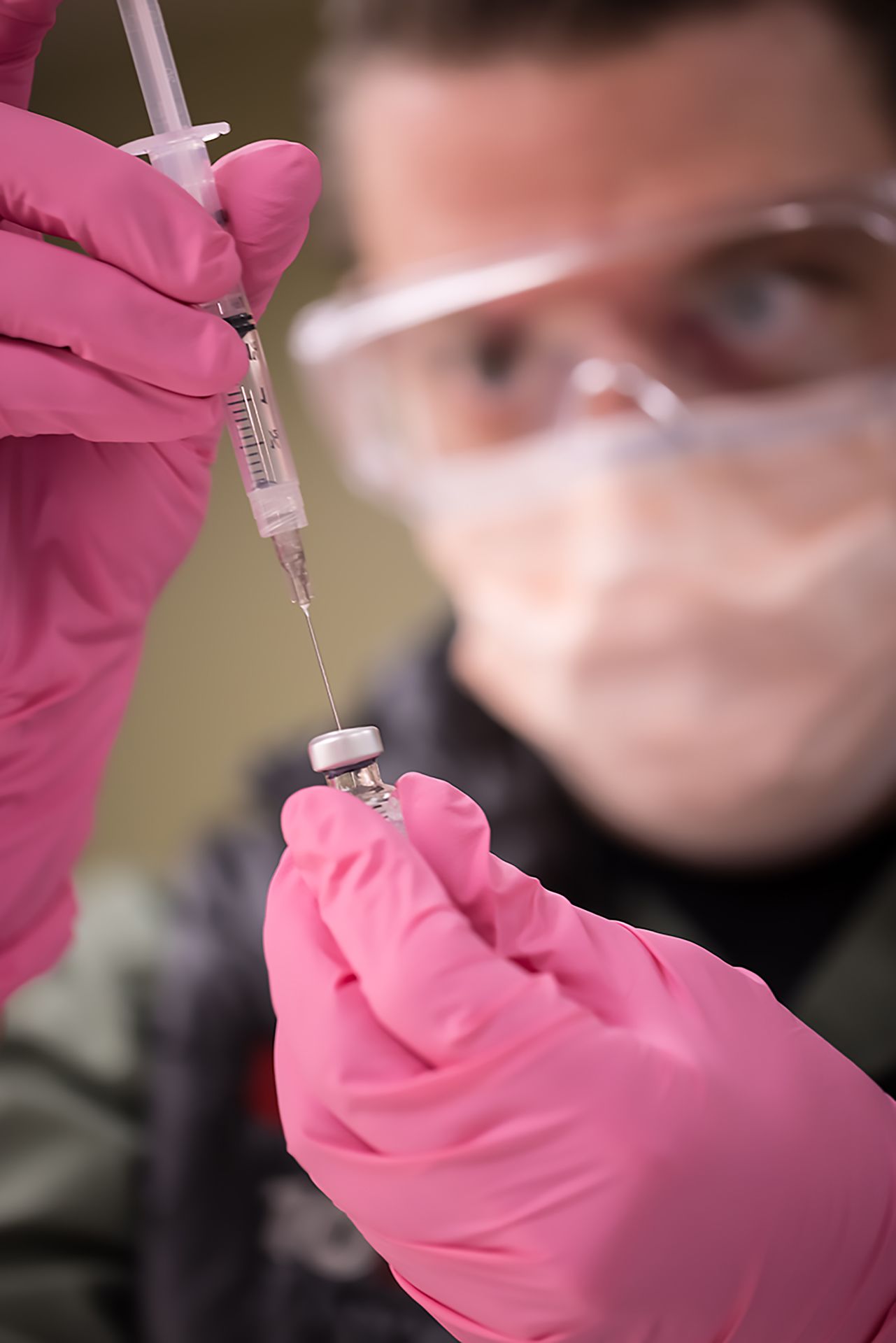
The first supply of the Pfizer-BioNTech vaccine arrived shortly after 7:00 am at University Hospital. Kavish Choudhary, PharmD, senior director of pharmacy at U of U Health, received notice over the weekend that the vaccine order for U of U Health had been placed by Utah Department of Health. He had been tracking the order overnight when he got word early Tuesday morning that the precious cargo had arrived.
At 8:15 am, U of U Health was ready to transfer the vaccine from the shipping container into the negative 70º freezer inside a secured area at University of Utah Hospital. A representative of the Centers for Disease Control and Prevention (CDC) was present to witness the transfer, which had to be done within a few short minutes.
Before the vaccine could be administered to the first five recipients, the vials had to sit in the freezer for two hours. This two-hour stabilization process must take place any time a vial is exposed to room temperature air. After this step, a vial needs to thaw for 30 minutes at room temperature or up to three hours in a refrigerator. Vials can then be prepared and drawn into syringes for administration.
The group of five frontline health care workers waited in anticipation for the arrival of the vaccine in the hallway outside the Work Wellness Center at University Hospital. Several U of U Health leaders came to support and witness this pivotal time in history. They included Michael Good, MD, CEO of U of U Health; Dan Lundergan, COO of U of U Health; Tom Miller, MD, CMO of U of U Health; Jeanmarie Mayer, MD, chief epidemiologist at University Hospital; Colleen Connelly, RN, senior nursing director for critical care, AirMed, and Emergency Department at U of U Health; Angela Dunn, MD, epidemiologist for the state of Utah; and several more.
Christy Mulder, a registered nurse in the medical intensive care unit (MICU) at U of U Health, who had just got off a night shift taking care of COVID patients, stepped up first to get the vaccine. Exhausted but excited, Mulder was more than ready to take this big leap. As Mulder sat in anticipation, pharmacy resident Channah Gallagher prepared to administer the vaccine. Mulder says at that moment she thought about all the patients she had taken care of over the last nine months. In a blink of an eye, it was done. Mulder had just become the first person in the state of Utah to receive the Pfizer-BioNtech COVID-19 vaccine
In a following press conference, she told the media, “On one hand, it’s an honor to care for the community during this time, but on the other hand, we’re tired and drained—emotionally and physically. To get a vaccine, it’s overwhelming because it’s the beginning of an end.” Mulder not only thought of her patients but also those behind the scenes of the vaccine. “On a day like today, I’ve been thinking about everyone involved in developing the vaccine,” Mulder said. “I’m so thankful for people who are educated and trained to provide us this gift.”
Four other U of U Health care workers, including an emergency physician, respiratory therapist, health care assistant, and environmental services worker, were among the first group to receive the vaccine. Here are their first thoughts:
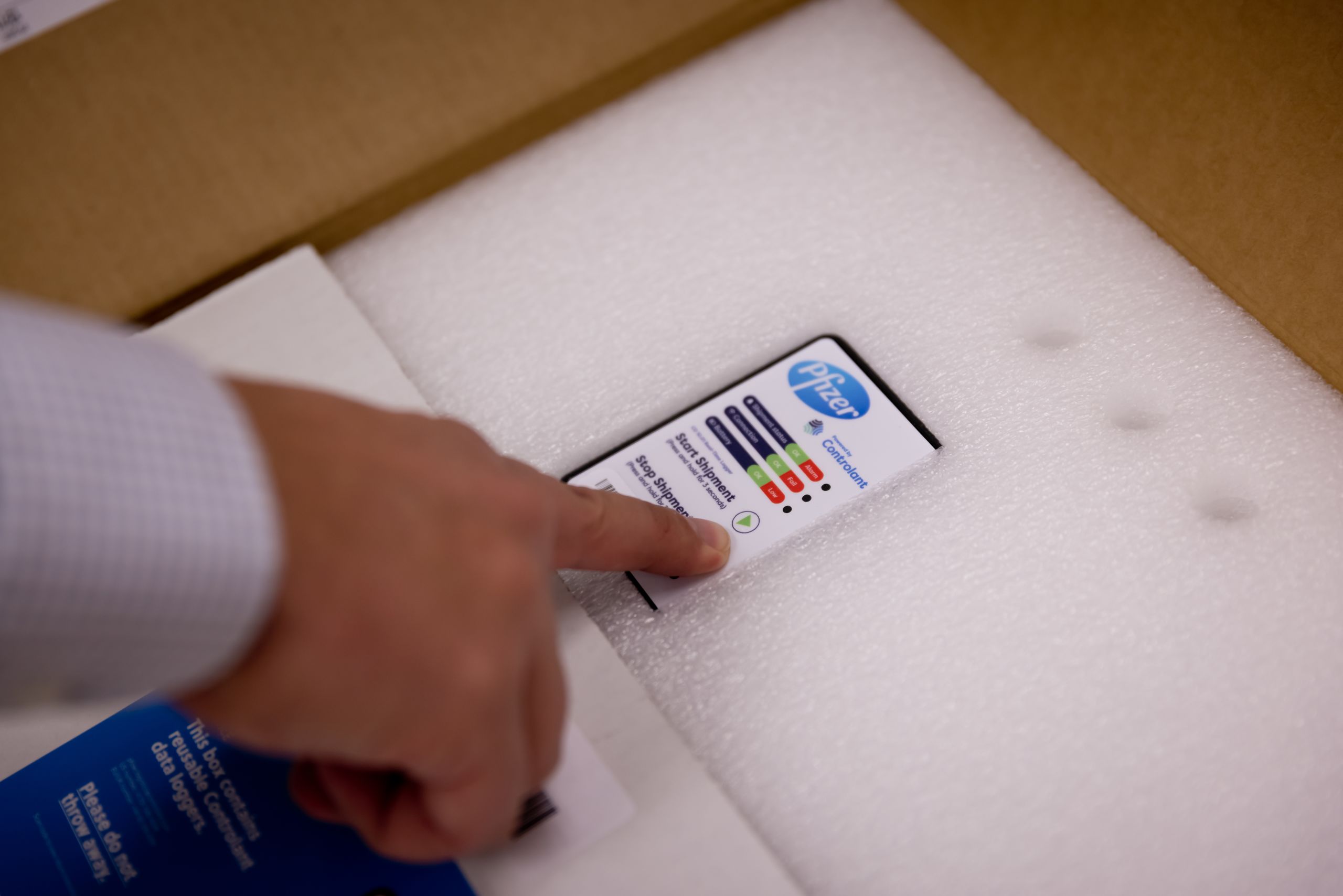
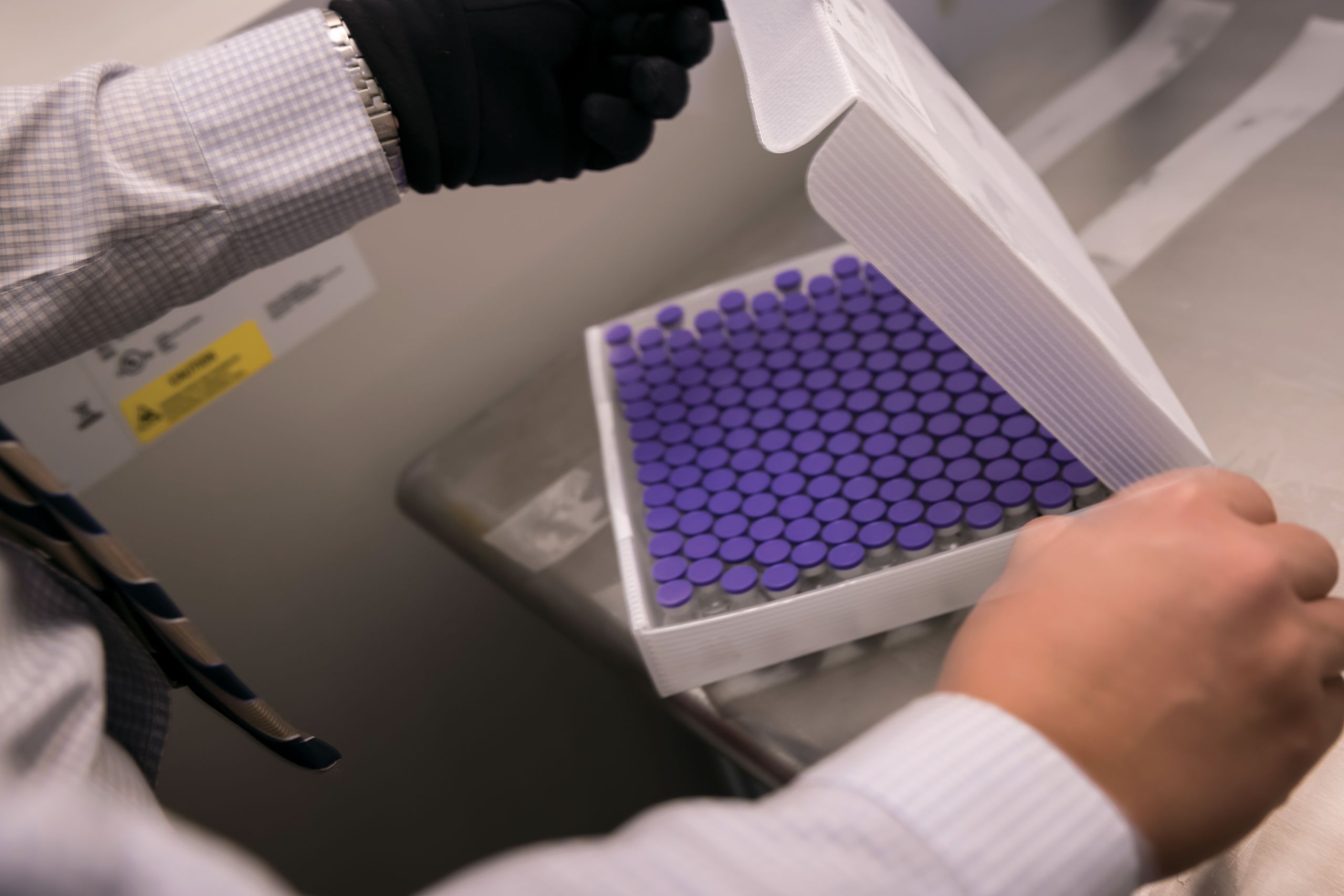
“I always knew I was going to get the vaccine. I thought that I would lead by example and get it first so, hopefully, people follow in my footsteps.”
—Brad Thompson, RT
“I was excited to get the vaccine. It’s been a rough couple of months, so to be able to have a vaccine is a light at the end of the tunnel.”
—Diana Navarrete, HCA
“I’m excited for the future. We’re now able to continue patient safety and safely work here together.”
—Ellen Begay, EVS
“To see a vaccine produced this fast and in our arms is probably one of the best Christmas presents I’ve ever received.”
—Stephen Hartsell, MD
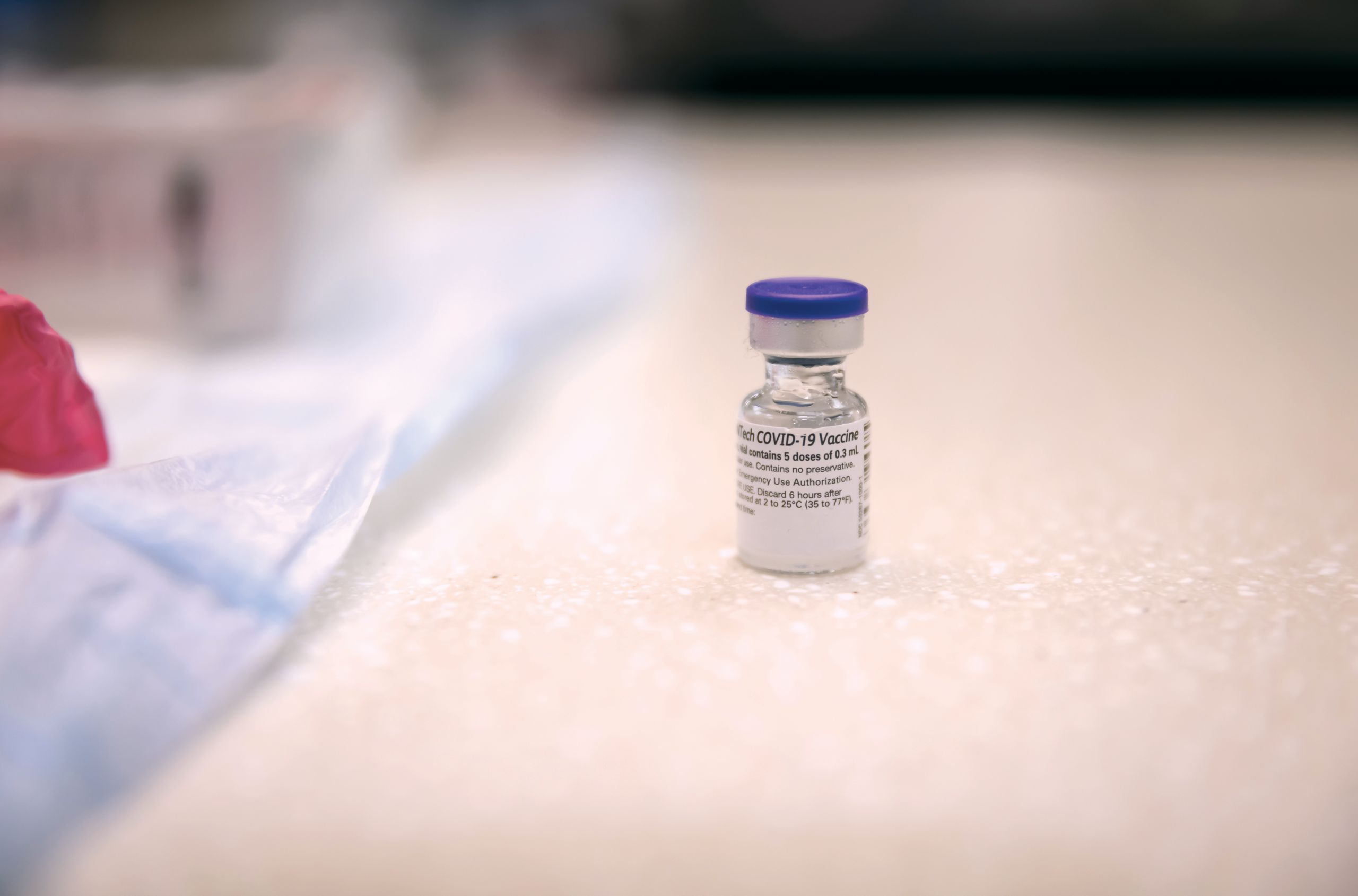
Following the initial first five recipients of the vaccine, several dozen staff in the MICU and COVID-19 units at University Hospital were vaccinated. “We’re here every day working frontline with COVID patients,” said Lindsey Workman, occupational therapist at U of U Health, after getting the vaccine during her shift in the COVID intensive care unit (ICU) at University Hospital. “That takes a little bit of worry away to continue to do our job and feel safe and protected.” Overall, 90 employees at U of U Health were vaccinated on the first day of receiving the Pfizer-BioNTech vaccine.
The effort to prepare for this moment involved multiple people and countless hours of collaboration. Jeanmarie Mayer, MD, managed the vaccine rollout plan and led a COVID vaccine planning committee. These groups branched out into other multidisciplinary teams and subcommittees that included physicians, nursing directors, pharmacy, emergency management, ethicists, EHR systems, information and technology, communications, and many more. “We had to have plans in place so we could be prepared to distribute the vaccines as soon as it arrived,” Mayer said.
Choudhary and Russell Findlay, PhD, manager of pharmacy support services at U of U Health, organized another important part of securing the vaccine. This included plans for ordering, receiving, storing, and distributing the vaccine, as well as rolling out vaccine clinic stations among the entire health system. As many as 18,500 health care personnel, including clinical students, need to be vaccinated at U of U Health.
All U of U Health care workers will have the opportunity to get the vaccine, which is being rolled out in four waves. The first wave includes health care personnel working on the frontlines in higher-risk COVID-19 areas. “These are health care workers that are exhausted and working extra shifts,” said Andy Pavia, MD, chief of the Division of Pediatric Infectious Diseases at U of U Health. Pavia referred to this process as “the end of the beginning,” but emphasized how much work still needs to be done. “Think of every provider in the state,” Pavia said. “And it’s not just at the big hospitals but those in small clinics and in remote areas across Utah. This is a huge project that we are just beginning as a state.”
On this historic vaccination day, Michael Good, MD, CEO of U of U Health, shared a message with all health care professionals across the health system:
“This is a virus that entered our world less than a year ago. It’s caused great havoc across the globe, in our country, and certainly here in our state. I’m very proud of health professionals at University of Utah Health. We’ve cared for so many coronavirus patients, and this vaccination program means the end is in sight. It means, hopefully, in a few months, coronavirus will not be moving in our community with its current speed and impacting too many individuals. This vaccination is the beginning of the end of the pandemic.”
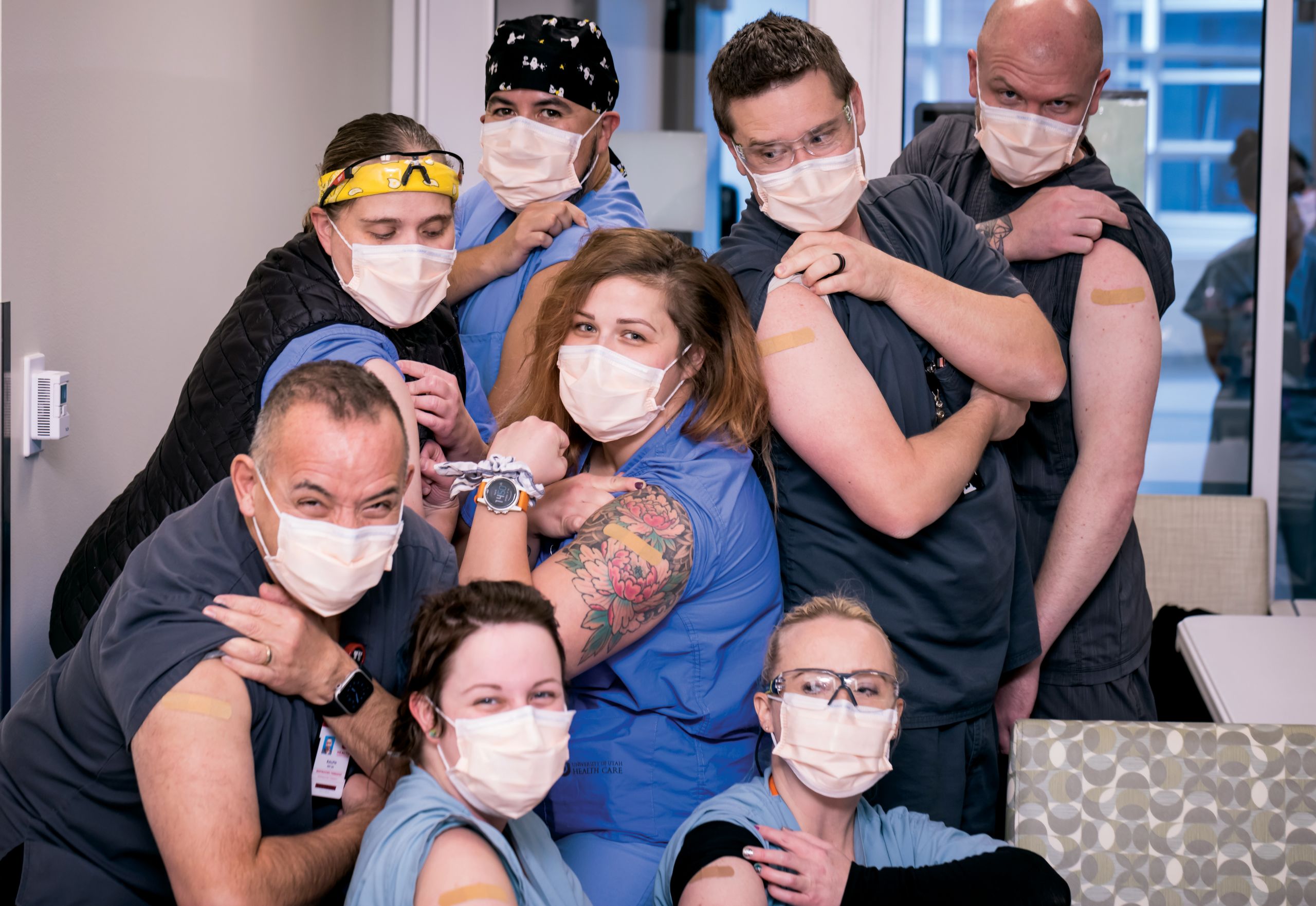
Although getting back to normalcy is closer, the pandemic is still far from over. “It’s important for the people in the community to realize that this isn’t over,” said Thompson, the second frontline health care worker to get vaccinated at U of U Health and in the state of Utah. “This is still going to be going on every day.” Doctors at U of U Health say 70 percent of the population needs to get vaccinated to truly end the coronavirus pandemic.
There’s no doubt the arrival of the vaccine has created a lot of excitement and hope among health care workers at U of U Health. “The reason why all of us stepped up to be the first is to be an example for not only our fellow workers and providers but also our patients and the public,” Hartsell said. “Hopefully this will encourage them, when they are given the chance, to step up, get in line, and get immunized.”
There’s also a sense of relief. “All of us who have been watching COVID ravage the community and see patients die are incredibly grateful the vaccine is here—and that we have a chance to get it,” Pavia said.
Vaccine Arrival Day
By Kylene Metzger
Photography by Charlie Ehlert
Design by Sandy Kerman

